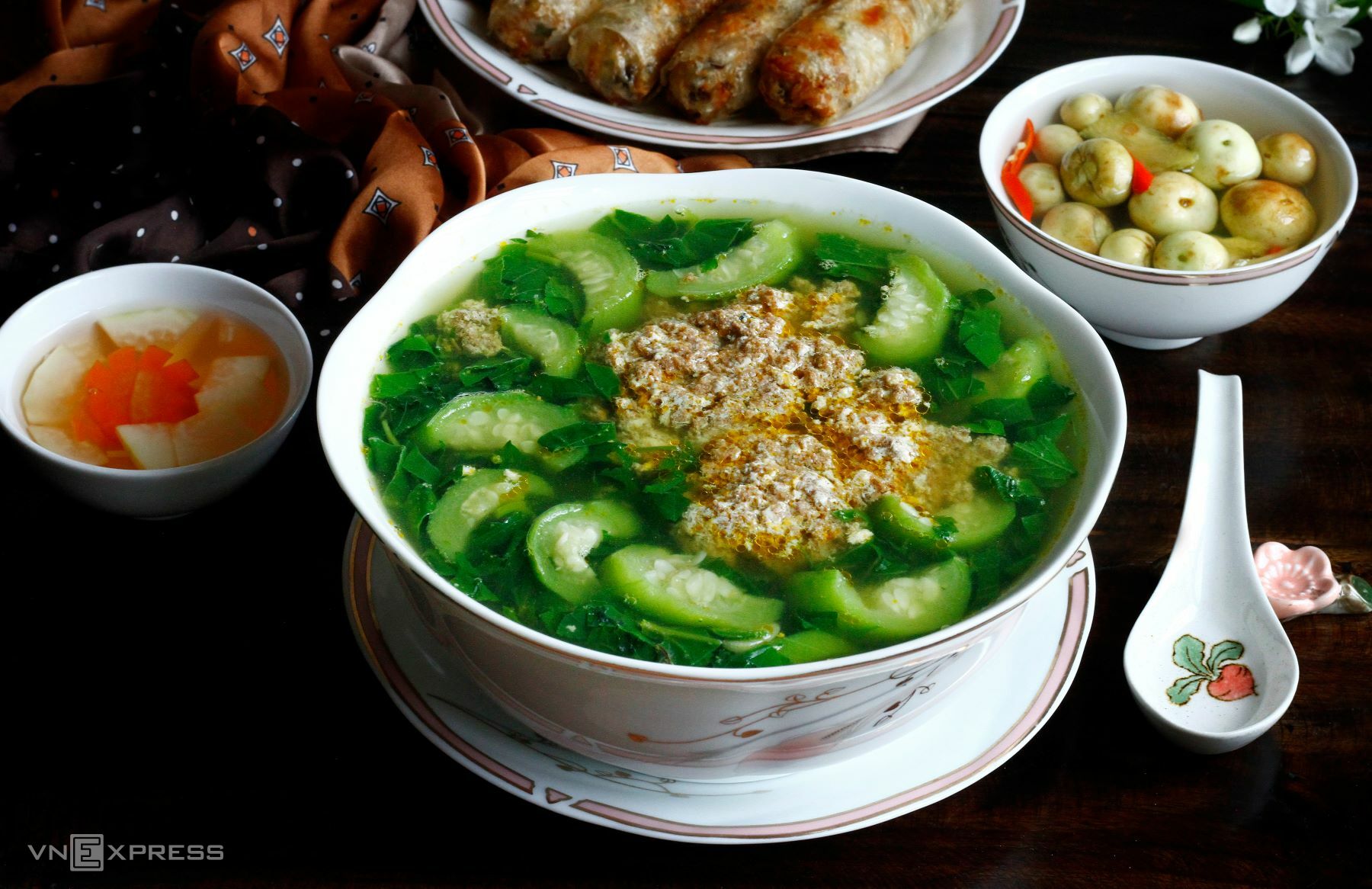According to folk wisdom, the best crab soup or rieu (crab and tomato soup) comes from pounding the field crabs using a mortar and pestle. The gentle, rhythmic pounding softens the crab without completely pulverizing the protein structures within the shell. This allows the small meat fibers to retain their shape, resulting in a tastier broth and evenly distributed crab meat clumps.
Furthermore, hand-pounding generates less heat, preventing the denaturation of proteins and aromatic compounds in the crab meat. This results in a soup with a naturally sweet, delicate aroma and rich flavor. The even pounding also creates less foam, keeping the crab broth clear.
Conversely, using a blender's high-speed blades shreds the crab meat unevenly, mixing it with finely ground shell fragments that are difficult to filter out. The sweetness from the protein dissipates, resulting in a blander broth and loosely formed, fragmented meat clumps. The blender's rapid processing also generates heat, denaturing the proteins and breaking down enzymes, diminishing the natural sweetness and introducing a slightly fishy odor.
 |
Illustration photo: Bui Thuy |
In Eastern culinary philosophy, field crabs are considered cooling, with a sweet taste. They are believed to invigorate blood circulation, strengthen tendons, bones, and joints, and detoxify the body, making them suitable for summer consumption. Crab soup is often paired with summer greens like mong toi (basella alba), rau day (jute mallow), or muop (sponge gourd), all considered "cooling" ingredients. The slow, gentle heat generated during hand-pounding is seen as a way to "warm" the ingredients, balancing their properties. This makes the soup not only refreshing but also easy to digest, perfect for hot summer days.
Hand-pounding the crabs with a little salt helps dissolve the protein chains into a thick gel that absorbs and retains water better. Protein tends to denature at high temperatures, causing the protein strands to tighten and expel water molecules, resulting in a dry texture. Adding salt disrupts these strands, preserving moisture and protein structure during cooking.
Hand-pounding also produces uniformly textured crab paste that is easy to filter with minimal powdery residue compared to blending. When cooked, the crab meat forms soft, fluffy clumps that rise to the surface without disintegrating or releasing excess water. The resulting broth is clear, fragrant, and naturally flavorful. In contrast, blended crab is prone to structural breakdown, leading to a cloudy broth with less defined meat clumps that tend to dissolve, resulting in a thinner soup that lacks the characteristic richness.
Traditional Vietnamese cuisine emphasizes subtlety, gentleness, and elegance. While hand-pounding crab for soup or rieu is time-consuming, it enhances the dish's flavor. In today's fast-paced life, crab blenders offer a time-saving alternative. Adjusting the blender to a low speed and processing in small batches can still produce delicious crab soup or rieu. However, it's difficult to match the thick, fragrant, and beautifully formed crab roe clumps achieved through hand-pounding. The rhythmic sound of the pestle also evokes nostalgic memories of this rustic dish, a staple in traditional Vietnamese meals.
Bui Thuy












